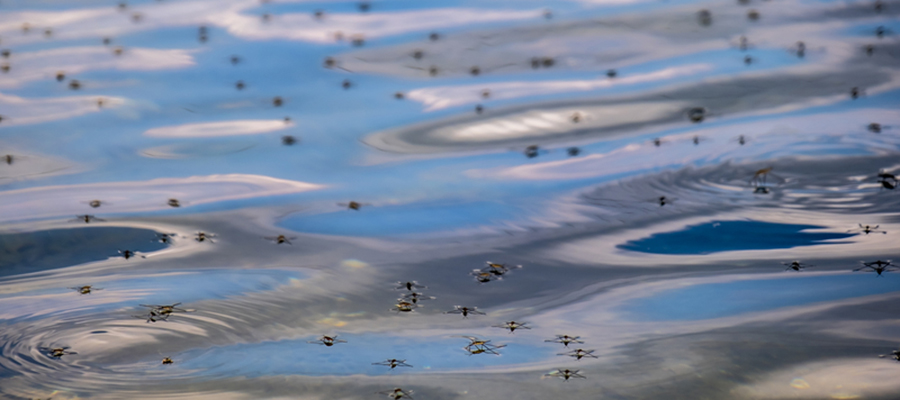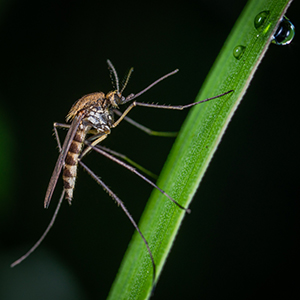Reduce Mosquitoes and Midge Flies Before They Swarm

Mosquitoes and midge flies are among the most annoying insects on the planet. Throughout the warmer months they seem to be everywhere, constantly buzzing in our ears and ruining our outdoor activities. Midge flies are non-biting insects known by many common names including blind mosquito and fuzzy bill. They do not bite, suck blood, or carry disease like true mosquitoes do. This makes midges more of a nuisance than mosquitoes, which can carry deadly diseases like West Nile and Zika.
Both midge flies and mosquitoes begin their life as an aquatic organism. Females deposit their eggs in low oxygen, murky, stagnant water found in ponds and lakes with low water quality. A female can mate multiple times in her lifespan and may lay 100-200 total eggs. They fly over the water and drop eggs, which develop into larvae in a few days to weeks.
 Adult mosquitoes and midge flies spend their adult life flying around, relocating, and breeding, but only female mosquitoes bite as they need the protein rich blood meal for egg development. It may seem almost impossible to control these insects; but there are effective, natural, and environmentally sound solutions to reduce their numbers.
Adult mosquitoes and midge flies spend their adult life flying around, relocating, and breeding, but only female mosquitoes bite as they need the protein rich blood meal for egg development. It may seem almost impossible to control these insects; but there are effective, natural, and environmentally sound solutions to reduce their numbers.
Since these pests start their life in water, it is easier to eliminate them before they become adults. For long term control, you need to improve the water quality of the lake. As lakes age, many develop layers of organic bottom muck that dramatically lowers dissolved oxygen levels. Low quality water favors growth of larvae while preventing fish and other insect predators from feeding on them.
Control Mosquitoes and Midges Where They Breed
There are three good options that used individually or together can greatly reduce these insect populations:
- Shoreline buffer zones: In addition to reducing the amount of muddy sediments, a beneficial buffer provides habitat for dragonflies. Both the dragonfly larvae and adults are predators and make mosquitoes a primary meal. A single dragonfly can consume 30-100 mosquitoes a day.
- Stock fish that feed on the insect larvae: Another way to cut down on your pond’s mosquito and midge fly population is by stocking certain fish that feed on the larvae. Combining fish stocking with a beneficial buffer will also provide habitat for the fish, giving them a place to escape from predators and potentially reproduce. It is always good advice to consult with a lake and pond management company before stocking any fish. They will be current on the fish stocking laws in your area.
- Pond and lake aeration: midge flies and mosquito larvae flourish in stagnant water with low oxygen. A bottom diffused aeration system fills the entire water column with oxygen that combats these pests by making it difficult for the larvae to thrive, increasing beneficial bacteria that speeds up decomposition which can result in less sediment and keeps the water moving. The females typically do not try to lay their eggs on moving water.
As you can see, there are a wide variety of sustainable solutions to help reduce and control mosquitoes and midge flies and the place to start is by improving water quality.
Get Help for Your Pest Problems Today
Vertex Aquatic Solutions, founded in 1977, is the professionals’ choice for research based scientific consulting services, aeration systems, floating fountains, bubble curtains and biological products to enhance water quality in lakes, ponds, canals, marinas and reservoirs. As respected leaders in the lake management industry the Vertex team of aquatic biologists, limnologists, fisheries scientists and engineers work together to deliver science-based, environmentally sound solutions to complex waterbody issues. Our products and services are delivered through an international network of qualified, experienced waterbody professionals who provide local support, service and pond management expertise to customers.
← Previous